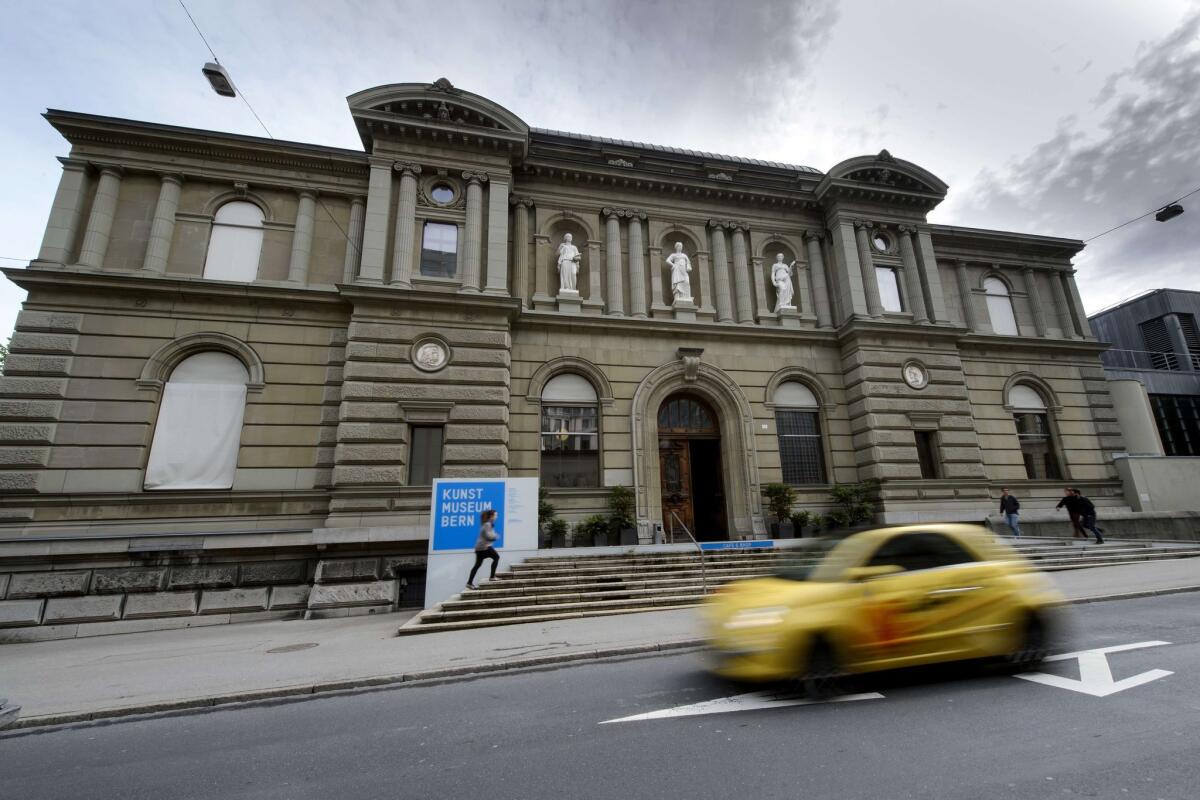Cornelius Gurlitt art trove accepted by Swiss museum

A view of the Kunstmuseum Bern in Switzerland.
- Share via
A museum in Switzerland said on Monday that it will accept the art trove of the late German dealer Cornelius Gurlitt, who had named the institution as his beneficiary for the masterpieces that were hidden from the public for years.
But the Kunstmuseum Bern in Switzerland said it won’t accept works in the collection that were looted by Nazi forces during World War II. Gurlitt was the son of the late Hildebrand Gurlitt, an art dealer who worked with the Third Reich.
The museum said that looted art will be returned to its rightful owners by the German government. If no rightful owner has been identified, the art will be exhibited in Germany with an explanation of its origins, so that rightful owners will have the opportunity to submit their claims.
Many families have already made claims on works in the so-called “Schwabing Art Trove.” Since the stash was revealed last year, German officials have begun the laborious task of authenticating the art, which includes works on paper and paintings by such artists as Pablo Picasso, Gustave Courbet, Max Beckmann and Albrecht Dürer.
Gurlitt’s trove also contained so-called “degenerate” works of art -- pieces that were deemed by the Nazis as being morally and aesthetically objectionable and that were removed by Nazis from museums.
The Bern museum said that it will accept these works. The museum said it will “make sure they receive proper care” and will “give priority to loan requests from museums that owned the works before the Nazi campaign.”
In May, the museum announced on its website that the reclusive Gurlitt had named the museum “his unrestricted and unfettered sole heir.” Gurlitt died that month. Museum officials said that “at no time has Mr. Gurlitt had any connection with Kunstmuseum Bern.”
Twitter: @DavidNgLAT
More to Read
The biggest entertainment stories
Get our big stories about Hollywood, film, television, music, arts, culture and more right in your inbox as soon as they publish.
You may occasionally receive promotional content from the Los Angeles Times.











